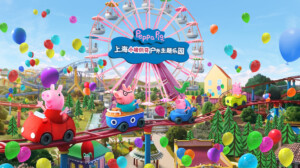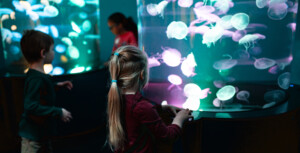Pico Play, a global leader in the planning, design, development and construction of world-class themed attractions and entertainment, has distilled its years of experience in the industry to develop a formula for success when it comes to developing and operating a successful wildlife venue.
The company has a methodical and tailored approach to each wildlife attraction that it works with, for instance, with current client Currumbin Wildlife Sanctuary (pictured, top).
Working together
One key component to the company’s success is that the design and wildlife teams work collaboratively from the start. With any project, animal selection and collection planning are instrumental in shaping an attraction – as much so as budget and design, says Pico Play’s Wildlife Sciences Expert and former Queensland Zoo and Aquarium Association president Al Mucci:
“You don’t just come in and design a monkey exhibit if you’re never going to get monkeys. You need to be able to navigate strict government guidelines and processes relating to animal acquisition.”
Pico Play’s Senior Designer Christian Thurtell agrees, saying that drawing on the knowledge of animal experts and local specialists is vital to developing a functional attraction:
“Animal handlers, trainers and curatorial staff are very in tune with the animals in their care and they know what is best for them from an environmental and enrichment point of view, but they don’t know how to take the next steps.
“They are an incredible source of knowledge about what materials you can and can’t use in exhibits, what and how animals eat, the stimulation they need and even how to clean out their enclosures. We take that information and translate it into the built form.”
Behaviour influences design
According to Thurtell, breeding cycles, swim patterns and feeding needs are some of the behavioural considerations that dictate design:
“Sharks and penguins, for example, have very specific swim patterns so you need to design their pools accordingly. Shark pools should allow the creatures to swim in a figure-eight pattern, if they swim in circles, they can get disorientated. Penguins, meanwhile, need a current they can swim against to exhibit natural ‘porpoise’ swim patterns, underwater caves to explore, quiet areas and access to natural materials to build their nests.
“Likewise, substrates should replicate an animal’s natural environment and adapt to their natural behaviour: from sandy pools for dolphins to muddy grounds for a hippopotamus; strong inert plastic structures for seals to slip-resistant surfaces for penguin pool edges.”
While successful attractions present animals in new and innovative ways, Mucci says that ideas for these often come from observing the animals themselves, in their natural habitat:
“Koalas live in trees so why not design aerial exhibits that place you up in the trees with them? Conversely, wombats live underground so build an exhibit that takes you underground too. This sort of imaginative thinking gives visitors a fresh perspective and a unique animal experience.”
Conservation is key
Animals should also be presented in a culturally appropriate manner. Measures like Reconciliation Action Plans and First Nations engagement are important, especially when presenting native Australian wildlife, says Mucci:
“It is so important to engage with local First Nations people and involve them in the decision-making process. Not only does this provide them with employment and opportunities, but it also provides organisations with valuable cultural knowledge they can then integrate into design concepts.”
Exhibits must also highlight the need for animal conservation.
“There’s a clear distinction between presentations that are servicing the needs of animals and those that lack integrity in a modern socially conscious society,” says Pico Play’s Creative Director, Mark Eady. “We have a responsibility to educate and inform people on threats to the sustainability of our wildlife.”
All these factors are important, but the final part of Pico Play’s formula is that the experience needs to be entertaining too. The company draws on its expertise and experience balancing animal, design, commercial and guest needs to create fun, enjoyable and meaningful experiences.
“At the end of the day, we need to deliver a premium experience where guests are not passive spectators and where animals are not just on display,” says Thurtell. “We need to design and present an environment where animals fully embrace their natural behaviours. We want guests to see happy and healthy animals and come away thinking ‘If I was a dolphin, I’d want to live there; if I was a polar bear, that’d be the place to be’.”
Earlier this year, Pico Play also announced that it is consulting on the creation of a new surf park on Australia’s Gold Coast, proposed as part of The Club at Parkwood Village.















